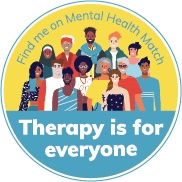Blogs

As a therapist, I am privileged to witness the resilience and strength of individuals who brave the turbulence of life's challenges and adversities. As we approach the holiday season, it is important to recognize the significance of nurturing our mental health amidst the whirlwind of festivities and obligations. Thanksgiving is a time for expressing gratitude, spending time with loved ones, and reflecting on our blessings. However, for many individuals, this holiday season may also bring about feelings of stress, loneliness, or sadness. It is crucial to prioritize self-care and mental well-being during this time. Here are some tips to help you navigate Thanksgiving with mindfulness and self-compassion: Practice Gratitude: Take a moment each day to reflect on at least three things you are grateful for. This simple practice can shift your focus from worries and anxieties to the positive aspects of your life. Set Boundaries: It is okay to say no to commitments or activities that drain your energy or trigger stress. Set realistic boundaries and prioritize self-care by honoring your needs and limits. Connect with Loved Ones: Reach out to friends and family members, either in person or virtually, to strengthen your social support network. Connection and belonging are vital for our mental health. Mindful Eating: Enjoying Thanksgiving meals mindfully can help you savor the experience and avoid overeating. Pay attention to your senses, chew slowly, and listen to your body's hunger cues. Engage in Self-Care Activities: Dedicate time for activities that nurture your soul, whether it's reading a book, going for a walk in nature, practicing yoga, or indulging in a creative hobby. Seek Support: If you are struggling with your mental health, don't hesitate to reach out for professional help. Therapists and support groups can provide guidance and support during challenging times. Remember, your mental health matters, especially during the holiday season. By prioritizing self-care, practicing gratitude, and seeking support when needed, you can navigate Thanksgiving with resilience and compassion. Wishing you a Thanksgiving filled with peace, positivity, and self-nurturing practices. With warmth and support,

Mother’s Day is a day traditionally dedicated to celebrating and honoring mothers. It is a time when families come together to show appreciation and love for all that mothers do. However, for some individuals, Mother’s Day can be a challenging and difficult time, especially if they are unsupported. If you find yourself feeling unsupported on Mother’s Day, know that you are not alone. It is important to remember that the day does not define your worth or value as a person or a mother. Here are some tips on how to cope and navigate through Mother’s Day when you are feeling unsupported: Acknowledge Your Feelings It is okay to feel a mix of emotions on Mother’s Day, such as sadness, loneliness, or grief. Allow yourself to acknowledge and validate these feelings without judgment. It is important to honor your emotions and give yourself permission to feel whatever comes up. Create Your Own Rituals If you do not have a supportive mother figure in your life or loved ones do not acknowledge you on this day, consider creating your own rituals or traditions for Mother’s Day. This could involve doing something special for yourself, spending time in nature, or engaging in activities that bring you joy and comfort. Reach Out for Support While you may not have the support you crave, it is important to reach out to other sources of support, such as friends, family members, or a therapist. Talking to someone you trust about how you are feeling can help alleviate some of the emotional burden you may be carrying. Practice Self-Care Take care of yourself on Mother’s Day by engaging in self-care activities that nourish your mind, body, and soul. This could include taking a relaxing bath, going for a walk, practicing mindfulness or meditation, or indulging in a favorite hobby. Shift Your Perspective Instead of focusing on what is lacking or missing on Mother’s Day, try to shift your perspective and focus on what you do have in your life. Consider the positive relationships, achievements, and experiences that bring meaning and fulfillment to your life. Set Boundaries If Mother’s Day celebrations trigger negative emotions or stress for you, it is okay to set boundaries and prioritize your well-being. You have the right to decline invitations or opt-out of activities that do not serve your mental or emotional health. Practice Gratitude Cultivate a sense of gratitude on Mother’s Day by reflecting on the positive aspects of your life, such as your strengths, resilience, and the relationships that bring joy and support. Gratitude can help shift your focus from lack to abundance. Remember, Mother’s Day is just one day out of the year, and it is okay to navigate it in a way that feels authentic and true to your own needs. You are strong, resilient, and deserving of love and compassion, regardless of your circumstances. Take care of yourself and be gentle with yourself while navigating this day.

The holiday season can be a whirlwind of excitement and chaos, especially for individuals with ADHD (ooh shiny!). But fear not! In this guide, we'll walk you through practical tips and tricks to help you navigate the holidays with ease and avoid decorating your beloved furry friend instead of the tree, maybe… Preparing Your Environment Simplify and declutter : Clear out the unnecessary clutter in your space, allowing for a calmer and more focused environment. Even it takes 7 audiobooks to stave off the boredom… Create a designated holiday decorating area : Designate a specific space where you can let your creative holiday spirit run wild, saving your pet from becoming a twinkly mess. This also helps contain the chaos and hopefully keeps it from migrating to the next room where the scissors, tape or pen inevitably gets lost. Use visual reminders and lists : Stay organized by using visual cues like sticky notes or checklists to keep track of tasks and deadlines. Yep-sticky notes- with bold markers help those tasks stick out. It it looks like Rudolph’s nose, you’re on the right track. Planning and Prioritizing Make a holiday to-do list : Create a master list of all the tasks and activities you want to accomplish during the holiday season. Ok, ok…yes another list and possibly some overwhelm. I suggest thinking about the things you REALLY want to do. What does the crow brain say? Break tasks into smaller achievable goals : Divide overwhelming tasks into smaller, more manageable steps to avoid feeling overwhelmed. You might already be there. Take a deep breath and grab that to-do list. Number each one of those tasks according to priority then brainstorm to include the smaller steps. If this is too difficult, Goblin Tools or other AI technology may be helpful. Set reminders and deadlines : Utilize technology to set reminders and deadlines, ensuring you stay on track and avoid any last-minute mishaps. Alexa! Set a reminder to pick up treats at my grocery store. Alexa? I don’t think she heard me…. Managing Distractions Create a dedicated workspace : Carve out a specific area where you can concentrate on holiday tasks. Now this may be the same space as the decorating area but I suggest finding a place you can try to focus a bit more-maybe the couch, the desk, your bed, or maybe a coffee shop (this helps some). Use noise-canceling headphones or calming music : Block out external stimuli that may trigger your ADHD symptoms, allowing you to focus on the task at hand. Depending on what works for you, less noise may be better or possibly some white noise. Bring on the rain sounds! Take frequent breaks and practice mindfulness : Incorporate short breaks into your routine to recharge and practice mindfulness techniques, helping you stay centered and rejuvenated. Sometimes a deep breath is all you need and sometimes it looks like packing up and wandering off into the wilderness…. Handling Social and Emotional Overload Communicate your needs : Openly communicate your needs to friends and family, explaining your struggles with ADHD and how they can support you during social events. That’s right-OPENLY COMMUNICATE! Masking maybe your go to but try letting others know when something isn’t working for you and how they can help. Remember, even Santa needs help. Practice self-care and take alone time : Prioritize self-care and take time for yourself when you need to recharge and prevent sensory overload. Put yourself first. The umpteenth trip to Walmart or Target for the one thing you forgot can wait (just remember to write it down). Set realistic expectations : Avoid overwhelming yourself with social obligations by setting realistic expectations for your attendance and level of participation. Over commitment. It sounds good at the moment but by the time the event comes around, you’d rather be in your pj’s snuggling your furry friend or watching LOTR on repeat. Practice saying, “Let me check my calendar or Let me get back to you on that.” Coping with Sensory Overload Identify triggers : Recognize sensory triggers that can cause distress and find strategies to minimize their impact on your well-being. Harsh lights-check. Too many people-check. Loud annoying music-check. Fifty Shades of what perfume was that?-check. All things found in your local department store. Do your best to reduce or cope with these spaces by using noise canceling or reducing headphones, going to the store at off peak hours, and wearing sunglasses or tinted shades. Create a quiet retreat space : Establish a peaceful sanctuary where you can retreat to when sensory overload becomes too much. It is totally ok to grab that Snuggy, hide under a blankey, turn off all the lights, or even hide in a bathroom stall when it’s too much. Use sensory tools : Consider incorporating sensory tools like fidget toys or weighted blankets to provide comfort and promote relaxation. I’m all in for the shark blanket I keep seeing on social media. Just saying…. Enjoying the Holiday Season Embrace creativity : Find alternative ways to decorate that align with your unique style and preferences, avoiding any potential mishaps involving the family pet. Fluffy does not want to be the topper on the tree, the actual Yule Log, the flame of a Hanukkah candle or any main holiday piece for the matter. However, they might be open to a cute little sweater-maybe. It might be best to focus on your strengths here… Try one activity at a time : Try to avoid multitasking and hyperfocusing by dedicating your attention to one holiday activity at a time. With all great intention, set out all the items you need for your activity and go to it. Use a timer to help with hyperfocus. Alexa? Celebrate your achievements : Acknowledge and celebrate your accomplishments, no matter how small; remember to be kind to yourself throughout the holiday season. Kick inner Grinch thoughts to the curb. As an ND therapist, I hope with this guide you’ve found some valuable tips to help with the holiday chaos and possibly chuckled a bit too. Happy Holidays!

Pawprints on Our Hearts: Finding Healing and Hope After Pet Loss I lost a foster kitten a few months ago. It had been years since I had fostered or taken in any animal this little, but I saw the post desperately looking for someone who could bottle feed a 3 week old kitten. I quickly called the animal shelter and he came home with me that night. He was the cutest little white ball of fluff I had ever seen. I was excited to help this little one as I had done this before and was confident in my ability to make sure he would live. I ordered all kinds of things for him to make sure he was comfortable and would thrive. After a few days he abruptly stopped taking his bottle and took a turn for the worse. I called the shelter in a panic and they directed me to bring him there for veterinary care. I was a mess. I was crying and panicking trying to get this little marshmallow there, but it was too late. I cried vehemently and felt so much-sadness, grief, loss, guilt, and shame. While he was only with us for a short time, he greatly impacted our lives, giving us so much joy. Losing a beloved pet can be an incredibly emotional and challenging experience. This article aims to provide guidance and support for those mourning the loss of a pet. By understanding the grief associated with pet loss and implementing various coping strategies, we can navigate through this difficult time and honor our precious companions. Understanding Pet Loss and Grief: Losing a pet can evoke a range of emotions, including sadness, loneliness, and even guilt. It's important to recognize and validate these feelings as part of the grieving process. Additionally, grief often occurs in stages, which may include shock, denial, anger, depression, and acceptance. Normalizing these stages can help individuals cope with the loss. Coping Strategies for Pet Loss Allow yourself to grieve Give yourself permission to experience the pain of loss and mourn your pet's absence. It is healthy and necessary to express your emotions during this time. Seek support from others who have experienced pet loss Connect with friends, family, or support groups where you can share your feelings and find comfort. Talking to others who understand the depth of your loss can be immensely helpful. Express your feelings through writing or creative outlets Writing in a journal, creating art, or engaging in other creative activities can be cathartic ways to express your emotions and memories of your pet. Remember and honor your pet in meaningful ways Hold a memorial service, create a memorial collage or photo album, or plant a tree or flower in their memory. These actions can provide a sense of closure and help keep their memory alive. Consider professional therapy or counseling If your grief becomes overwhelming or long-lasting, seeking professional help from a therapist or counselor who specializes in pet loss can provide additional guidance and support. Finding Support after Pet Loss: Seek support groups or tilize online forums and resources Join local support groups to connect with others who have experienced similar grief. Explore online pet loss forums, blogs, and communities where you can find support, guidance, and resources at any time. Engage with others who can relate to your experience.These platforms provide a safe space to share and heal. Consider volunteering or donating to pet-related causes in memory of your pet: Honoring your pet's memory by volunteering at an animal shelter or donating to pet-related charities can bring a sense of purpose and healing while helping others in need. Moving Forward and Honoring Your Pet Accepting the loss and allowing yourself to heal Although the pain of pet loss may never fully disappear, accepting the loss allows room for healing and finding joy in cherished memories. Embracing the memories and legacy of your pet Celebrate your pet's life by recalling happy memories and creating a legacy in their honor. Share stories, photographs, or even start a blog to keep their memory alive. Considering adoption or fostering as a way to honor your pet's memory When the time is right, consider sharing your love with another pet by adopting or fostering. This can provide comfort, knowing you are continuing to spread love and care to animals in need. By taking these steps, you can cope with the grieving process and find solace in the memories and impact your pet had on your life. Do what works for you-everyone grieves differently and there is no right way to grieve. Remember, you are not alone in your journey through pet loss and grief.

I can feel it creeping up …burnout. Never a good thing for a therapist nor anyone really but it happens. The feelings of overwhelm and exhaustion. I know when this starts to happen as my body and mind yearn for peace and rejuvenation. I usually go find a good hike somewhere or look for adventure. Being in nature brings me tranquility and revitalization not only for myself but for my career and family. However, it took me a while to identify what these feelings were and what to do when I started feeling this way. In the past, I have gotten to the point where if I were a candle, I’d be a lumpy, stub barely burning. I decided then I had to do something different so first things first… Identifying Burnout Burnout is a state of physical, emotional, and mental exhaustion caused by prolonged stress. It can affect anyone, regardless of profession or lifestyle. In this post, we will explore practical steps to overcome burnout, manage stress, and achieve an improved work-life balance. Let's dive in and reclaim our energy and motivation! Recognizing the Signs of Burnout Exhaustion: Feeling constantly tired and drained, both physically and mentally. You may want to stay in bed or on the couch. You may also find yourself more irritable. Decreased motivation and productivity: Finding it increasingly challenging to stay motivated and deliver high-quality work. Sometimes this looks like avoidance behaviors where you call into work, miss deadlines or avoid projects altogether. Emotional exhaustion and detachment: Feeling emotionally drained and becoming detached from work and personal relationships. Zoning out may become common as well as increased distracting activities (tv, gaming, etc.). You may also feel disconnected from your loved ones. Physical symptoms: Experiencing headaches, frequent illnesses, and changes in appetite or sleep patterns. This can also include stomach issues, not feeling rested or recuperated, overeating or not eating enough, and having difficulty falling asleep or staying asleep. Understanding the Causes of Burnout Work-related factors: Heavy workloads, long hours, lack of control, and inadequate support or recognition. Personal life factors: Family or relationship issues, financial difficulties, and other personal stressors. Personality traits and tendencies: Perfectionism, high self-expectations, and difficulty setting or maintaining boundaries. Imbalance between demands and resources: When the demands placed on us outweigh the resources available to cope with them. Steps to Overcome Burnout Prioritize self-care and relaxation: Make time for activities that rejuvenate you and prioritize your well-being. Even if it’s only for a few minutes, a little can help. Set boundaries and manage workload: Learn to say no, delegate tasks, and break projects into manageable chunks. Take a good look at your “plate”. Is it balanced or does it look like Thanksgiving overload? What can you take off of it? Seek social support and connection: Surround yourself with supportive friends, family, or colleagues who understand and validate your feelings. Try asking yourself, does this person add to my life or take from it? Practice stress management techniques: Engage in deep breathing exercises, practice yoga or meditation, or find other techniques that help you relax. What do you currently do? Is it a healthy way to manage stress? Explore and pursue passions outside of work: Engaging in hobbies and activities unrelated to work can provide a much-needed escape. What brings you excitement or passion? Implementing Self-Care Strategies into Daily Routine Exercise regularly: Engaging in physical activity boosts endorphins, serotonin, and dopamine which helps reduce stress. Getting at least 30 minutes of heart pumping activity is ideal but start where you’re at. If you can only exercise for 5 minutes at a time, great! Some is better than none. Get enough sleep: Prioritize a consistent sleep schedule and create a restful sleep environment. Reduce screen time, use blue light blocking filters, try white noise or sleep stories, create a dark room with room darkening shades or blinds, and avoid naps, caffeine and alcohol in the evenings. Practice mindfulness and meditation: Mindfulness exercises and meditation can help calm the mind and reduce anxiety. If meditation is difficult initially, try a short 5 minute guided meditation. Mindfulness can also look like taking a moment to recognize the beauty of the sky, truly enjoying a hot or cold drink, or practicing gratitude. Engage in activities that promote joy and relaxation: Find activities you enjoy, whether it's reading, painting, or spending time in nature. Explore where you feel rejuvenated, joyous, and peaceful. Where is your happy place? Take regular breaks and vacations: Plan breaks during the workday and use vacation days to unwind and recharge. Take the 5 or 15 minutes to practice deep breathing, walk outside, or even sit in your car if needed. A vacation does not necessarily have to be expensive or out of your budget. Maybe it’s a staycation where you turn off your phone, grab your comfy pajamas, and watch a series or play your favorite game. When all you’re doing still isn’t working…. If self-help strategies are not providing relief, it may be time to seek professional guidance. If you notice burnout is greatly impacting your relationships, work role, and overall functioning, please reach out to a therapist to help you navigate through these issues.





